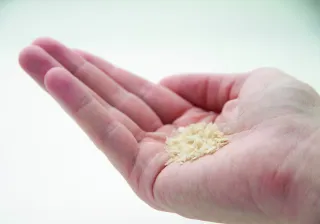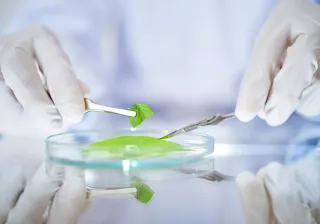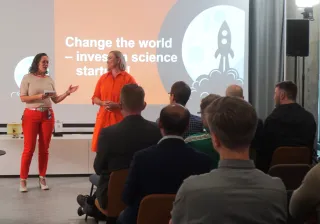Hap, a Japanese company, is moving its Coveross® technology global R&D and business expansion to a company established in Finland for entering new markets and user segments with functional fibres and textiles. The company is now working with Synbio Powerhouse ecosystem to find out whether the desired functionalities can be implemented with synthetic biology and biotechnology in a more sustainable way.
The purpose of Coveross® technology is to create functional fibres and textiles, i.e. materials that will repel UV radiation, heat, microbes, humidity, etc. Based on photocatalysis, far infrared, minerals, sustainable chemicals, fibres, etc., the technology was commercialised in Japan four years ago. Further development is being pursued in collaboration with Synbio Powerhouse, a synthetic biology ecosystem. –
– It is faster to take technologies and products global when you relocate development to an environment where you can easily work with a range of partners to create products and services for various user groups and for various environments, says Jarkko Jussila, Chairman of the Board of Coveross Oy.
The dialogue with VTT that began more than a year ago has already resulted in emerging innovations.
– VTT was a natural choice as headline partner for further development of the Coveross® technology and for thinking up new products and services. VTT has a lot of expertise in cellulose-based materials and fibres, and circular economy. VTT is also very advanced in the field of sensor technology, such as printed electrodes. There are emerging innovations in synthetic biology that can, with some adaptation, be used in textiles, says Jussila.
Antibacterial and literally cool clothes
Coveross® technology uses methods that have been known in Japanese bath houses and Japanese traditional handicraft industries since a long time ago. It lends protective properties to textiles; for instance, stains and microbes (e.g. mould) that adheres to the material composts of its own accord.
– When stains and microbes does not stick, neither does the smell. People do not have to wash their clothes so often, and that is a sustainable benefit, says Jussila. Simple airing and exposure to light is enough.
Future research will include exploring whether textiles can be imbued with antiviral properties. During currently evolving COVID-19, such functionalities would be a huge benefit for the population health and would help in saving expenditure in healthcare.
Another comfortable health benefit is the ´cooling effect´.
– The temperature inside a garment may be 3 or 4 degrees lower than on the outside. There are many user groups who would benefit from a functionality like this, both in work clothes and everyday clothes.
Other way round, a joint study with Shinshu University in Japan shows that recently developed Coveross® fabric actually slightly stimulates circulation, raising the body temperature of the user by 0.1 to 0.2 degrees.
– It is entirely possible that textile applications like this can be used to stimulate even the immune system. This sort of research is in the sphere of digital health, which is another one of VTT’s areas of expertise, says Jussila.
New B2B and home use solutions in the pipeline
At the moment, Coveross® textiles can be manufactured in two ways. In a textile manufacturing phase, fabrics can be produced with different finishing on both sides. For instance, a fabric may be produced with strong UV protection on the outside and a functionality allowing the skin to breathe on the inside – end even with cool touch.
– Another approach is to process ready-made clothing and textile products. For instance, we can give an ordinary T-shirt the same kind of waterproofing as Goretex does at the moment, but considerably more cheaply. We are also looking at a third way that would allow people to apply the treatment themselves at home, says Jussila.
Coveross is currently looking for B2B partners in Finland and Europe to manufacture Coveross® clothing and interior textiles, or to process the Coveross® finishing of the products at the sales market. Such products could be produced also under co-brands, which could prove a mechanism e.g. for the Finnish textile and clothing brands to enter the huge markets of Japan and Asia through the channels established with Coveross®. Jussila notes that the intention is to bring some products to market as early as in the last quarter of this year. He says that even setting up a new production facility, with a partner enterprise, is not out of the question. The organisation of the new company is still a work in progress and hiring is in progress.
– There will be a global product development unit in Finland that will also coordinate product development in Japan. European sales and marketing will be based in Finland, says Jussila.
He explains that another reason for selecting Finland as the location for the company apart from the Synbio Powerhouse ecosystem around VTT was Finland’s extensive expertise in the circular economy. Coveross is also involved in the Telaketju 2 project, mostly financed by Business Finland, concentrating on creating new business models and products for the circular economy for textiles.
For further information on the Synbio Powerhouse ecosystem, read the interview with Co-Creation Manager Tuula Palmén: Synthetic biology tackles challenges of humanity.
Text: Juha Peltonen Photo: Timo Porthan










